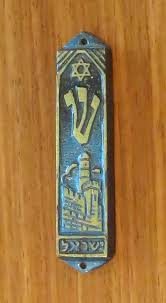10
Background and Foundation
by yudaica2013 ·
 Background and Foundation Plan Gualeguaych founding. In a territory inhabited since pre-Hispanic peoples groups from chan, Charrua and Guarani. From the seventeenth century, Spanish representatives of Santa Fe and Buenos Aires was allowed possession of these lands (see History of Entre Rios) to settlers who founded insecure rural households in continuing dispute with the original tribes. These conflicts resulted in a series of campaigns of extermination and enslavement of indigenous people were decimated in the mid eighteenth century. In the final decades of that century, the number of people scattered throughout the area from Buenos Aires, Santa Fe and the Jesuit (expelled by the Spanish and attacked by the Portuguese). These people developed a subsistence economy and had conflicts (sometimes violent) with the settlers and landowners settled there decades ago.By 1770 he had formed a settlement around a shrine to the south of the present Gualeguaych . In December 1777 he was appointed the rancher Stephen Justo Garcia de Zuniga, as commander of the parties of Gualeguaychu Gualeguay and Uruguay. ” In 1779 the bishop of Buenos Aires Malvar y Pinto visited the area and seeing the precarious situation of small property owners and ranchers against Portuguese incursions decides to report this to the Viceroy (also rises the chapel which existed from 1764 to the rank of parish ). In 1782 the Viceroy Vertiz commissioned sergeant major of Dragoons Almanza Tomas de Rocamora (military) Tomas de Rocamora to organize the villagers scattered in villages in the region to strengthen a Spanish presence in the area before raids Portuguese from the Banda Oriental). Rocamora founded three villages in the south of Entre R os: Gualeguay, Concepci n del Uruguay and Gualeguaychu.Arrived at the village preexisting Gualeguaych , and received by the residents, noted that the place where the first settlement was low, swampy and surrounded by grasslands, decided to move further north, off the island (now called Liberty) in Wide, spacious blade that ended the river eighty yards. According to Indian laws, cleared the ground, carried out the measurement, public places allocated to 85 sites for the early settlers in the form of a checkerboard roll founding planted in the square and chose the patron saint and prepared land for buildings public and religious. The foundation was held on October 18, 1783 under the name of Villa San Josef de Gualeguaych . On October 18 of 1783 formed the first council, appointing its members Rocamora: Mayor Vicente Navarro and aldermen Domingo Ruiz, Jose Valentin and Pedro Barrios Duarte, was appointed Captain of militia Gregorio Santa Cruz.
Background and Foundation Plan Gualeguaych founding. In a territory inhabited since pre-Hispanic peoples groups from chan, Charrua and Guarani. From the seventeenth century, Spanish representatives of Santa Fe and Buenos Aires was allowed possession of these lands (see History of Entre Rios) to settlers who founded insecure rural households in continuing dispute with the original tribes. These conflicts resulted in a series of campaigns of extermination and enslavement of indigenous people were decimated in the mid eighteenth century. In the final decades of that century, the number of people scattered throughout the area from Buenos Aires, Santa Fe and the Jesuit (expelled by the Spanish and attacked by the Portuguese). These people developed a subsistence economy and had conflicts (sometimes violent) with the settlers and landowners settled there decades ago.By 1770 he had formed a settlement around a shrine to the south of the present Gualeguaych . In December 1777 he was appointed the rancher Stephen Justo Garcia de Zuniga, as commander of the parties of Gualeguaychu Gualeguay and Uruguay. ” In 1779 the bishop of Buenos Aires Malvar y Pinto visited the area and seeing the precarious situation of small property owners and ranchers against Portuguese incursions decides to report this to the Viceroy (also rises the chapel which existed from 1764 to the rank of parish ). In 1782 the Viceroy Vertiz commissioned sergeant major of Dragoons Almanza Tomas de Rocamora (military) Tomas de Rocamora to organize the villagers scattered in villages in the region to strengthen a Spanish presence in the area before raids Portuguese from the Banda Oriental). Rocamora founded three villages in the south of Entre R os: Gualeguay, Concepci n del Uruguay and Gualeguaychu.Arrived at the village preexisting Gualeguaych , and received by the residents, noted that the place where the first settlement was low, swampy and surrounded by grasslands, decided to move further north, off the island (now called Liberty) in Wide, spacious blade that ended the river eighty yards. According to Indian laws, cleared the ground, carried out the measurement, public places allocated to 85 sites for the early settlers in the form of a checkerboard roll founding planted in the square and chose the patron saint and prepared land for buildings public and religious. The foundation was held on October 18, 1783 under the name of Villa San Josef de Gualeguaych . On October 18 of 1783 formed the first council, appointing its members Rocamora: Mayor Vicente Navarro and aldermen Domingo Ruiz, Jose Valentin and Pedro Barrios Duarte, was appointed Captain of militia Gregorio Santa Cruz.


